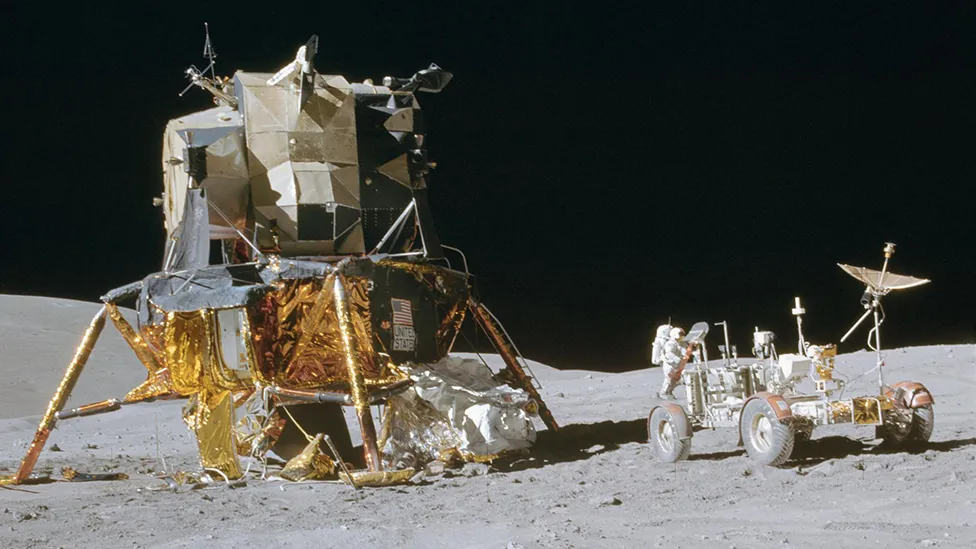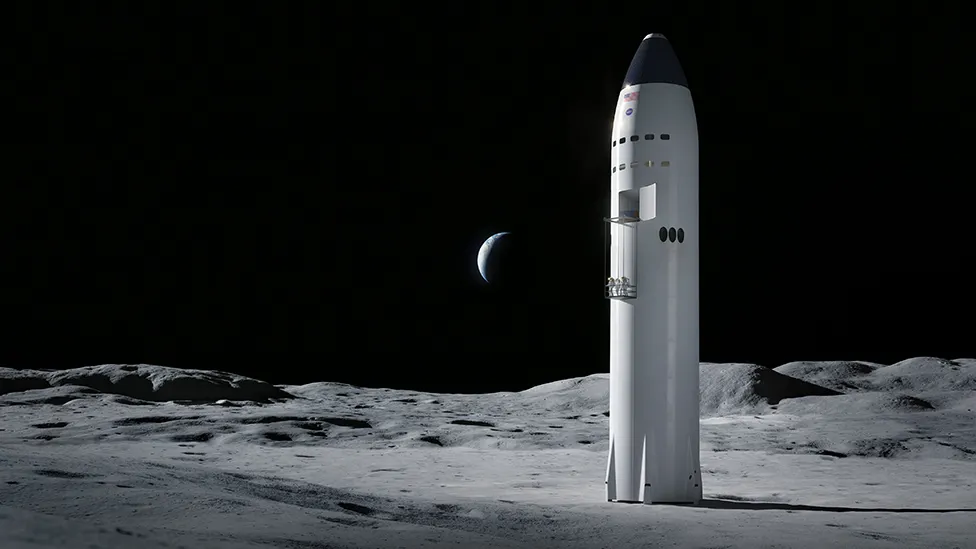The US space agency has brought in a second billionaire to help it return astronauts to the moon.
NASA is already working with Elon Musk’s SpaceX on a launch system based on its new Starship rocket, which will land as early as 2025.
It has also now awarded Amazon.com founder Jeff Bezos a contract to build a lander to take a crew to the lunar surface later this decade.
His company, Blue Origin, will produce a more conventional-looking vehicle.
Mr Bezos will have help from some established names in the US aerospace sector, including Lockheed Martin, Boeing, Draper and Astrobotic.
Blue Origin secured the contract in competition with Dynetics and Northrop Grumman.
Mr Bezos’ company, which is based in Kent in the US state of Washington, will receive just over $3.4 billion from NASA as part of the contract. And the firm will spend “well north of $3.4 billion” of its own money on the project.
“We’re going to the moon to learn, to live, to invent, to create all these things to be successful on the moon to go to Mars,” said agency administrator Bill Nelson.
“Mankind’s great adventure into space is here. And that’s part of it.”

More than 50 years have passed since the last human landing on the moon
More than 50 years have passed since astronauts last set foot on the moon.
NASA has laid out a road map for achieving a more sustainable human presence on Earth’s natural satellite next time around.
The agency’s Artemis program envisions stays of weeks on the lunar surface, not just days, as was the case in the 1960s and 1970s.
SpaceX has been asked to land two astronauts on the moon’s south pole in late 2025 or 2026, and then again in 2028. These are the Artemis III and Artemis IV missions.
Blue Origin’s 16-meter-tall, 45-ton vehicle is called the Blue Moon. This will complete the work of Artemis V, which should happen no earlier than 2029.
“Before the first crew landing takes place, we will land an exact replica of this lander before – a year before. So we’ll be testing the complete descent systems and the complete architecture before the astronauts get into the vehicle,” explained John Koulouris, Blue Origin’s vice president of lunar transportation.

Artemis I already happened last November: An unmanned test of NASA’s rocket and capsule that will take astronauts to the vicinity of the Moon. Artemis II is planned for next year and will see a crew of four make a simple orbit around the moon.
For all crewed missions, the idea is for the astronauts to transfer to special landing craft that will be waiting for them in lunar orbit. They would go down to the surface in these vehicles, complete their research, and then return.
By the end of the decade, NASA intends for the transfers to take place at a new space station above the Moon called Gateway.
SpaceX won its contract in 2021. The company wants to use a variant of its massive next-generation Starship rocket system, which debuted four weeks ago.
The first flight was aborted after four minutes when the vehicle went out of control. But SpaceX is already talking about a second launch this summer.
Starship readiness is one of the key factors that will determine whether NASA can keep its Artemis program on track. Currently, many commentators consider the first manned moon landing in late 2025 to be a very ambitious goal.


Leave a Reply